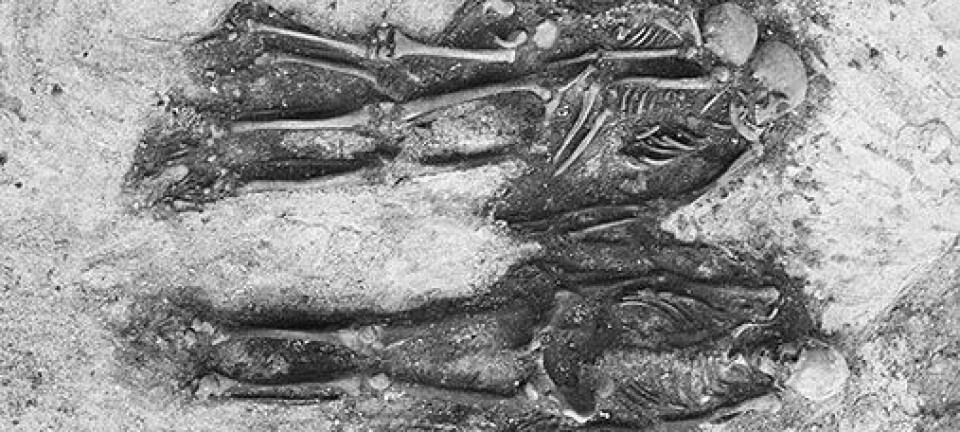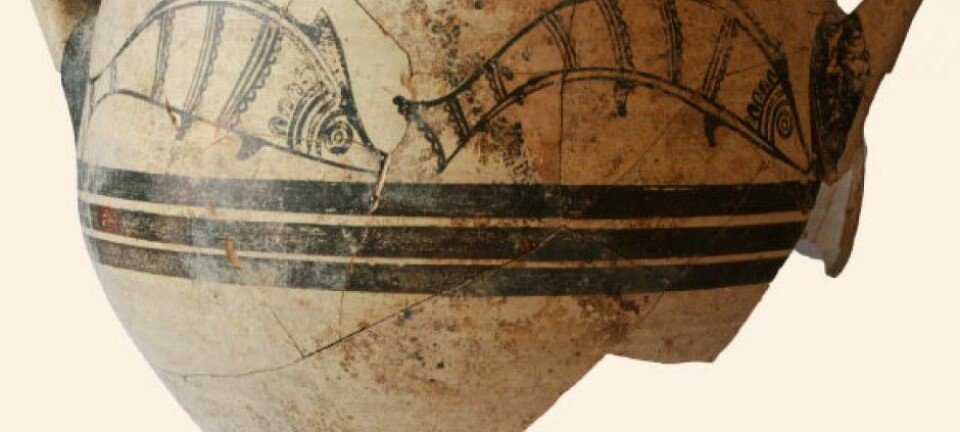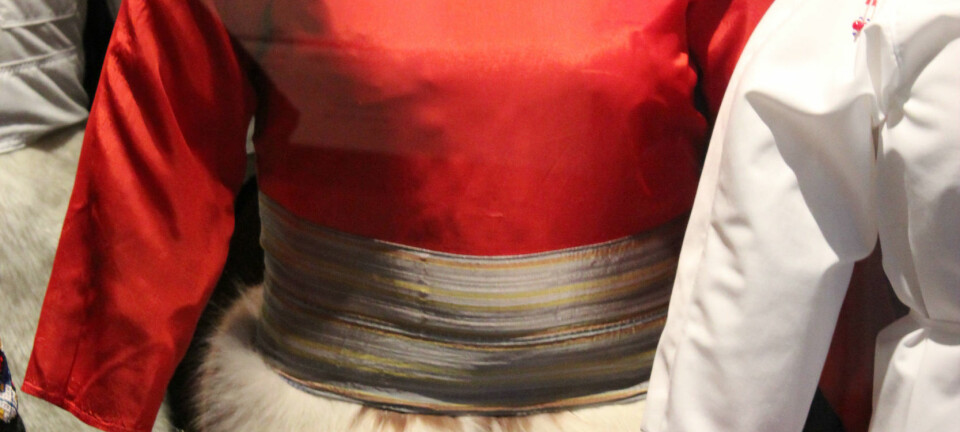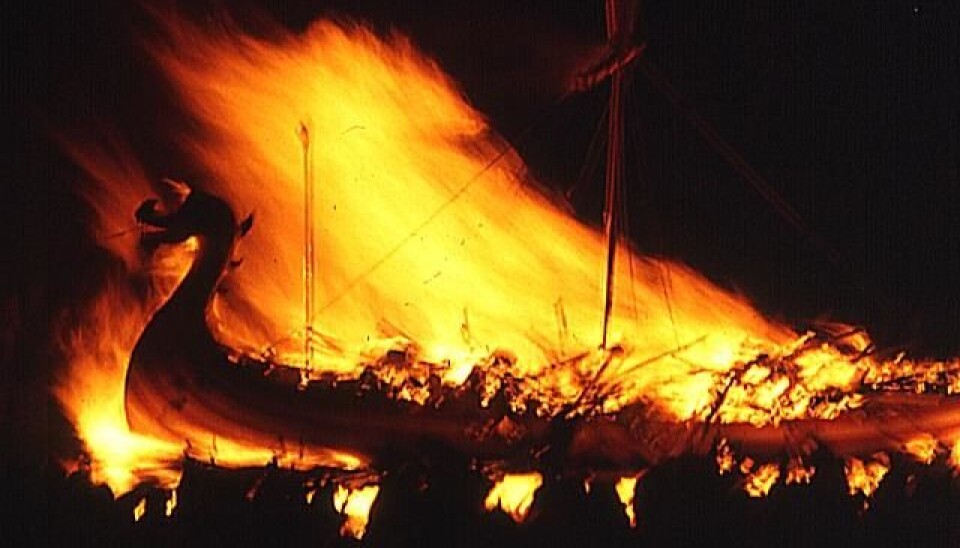
High flames gave status to ancient funeral pyres
Funeral pyres were an important ritual for thousands of years in Denmark. The dead were paraded and the cremation was a spectacular show.
The flames dance high in the air as they embrace the deceased nobleman. A wooden pyre, ten by twenty metres, reaches two metres up into the sky, ensuring that the blaze is burning bright. The nobleman is sent on his way to the afterlife.
“They used much more wood than was necessary—a few cubic metres would have been enough, but it was intended to be a spectacular ritual,” says archaeologist Mogens Bo Henriksen from Odense City Museums. He recently completed his Ph.D. dissertation on the significance of funeral pyres in Denmark.
Throughout early history, thousands of chieftains were cremated in this fashion, and it would have been a spectacular sight for any onlookers. Some received a gigantic fire, as their body was laid in a boat and set alight. Others were sent on their way with as much wood as they desired.
“The number of symbolic gifts, such as beads, silver, and gold increases with the size of the fire. The common denominator is that the dead is cremated, then you sift through the remains, and occasionally it was sealed with a mound,” says Henriksen.
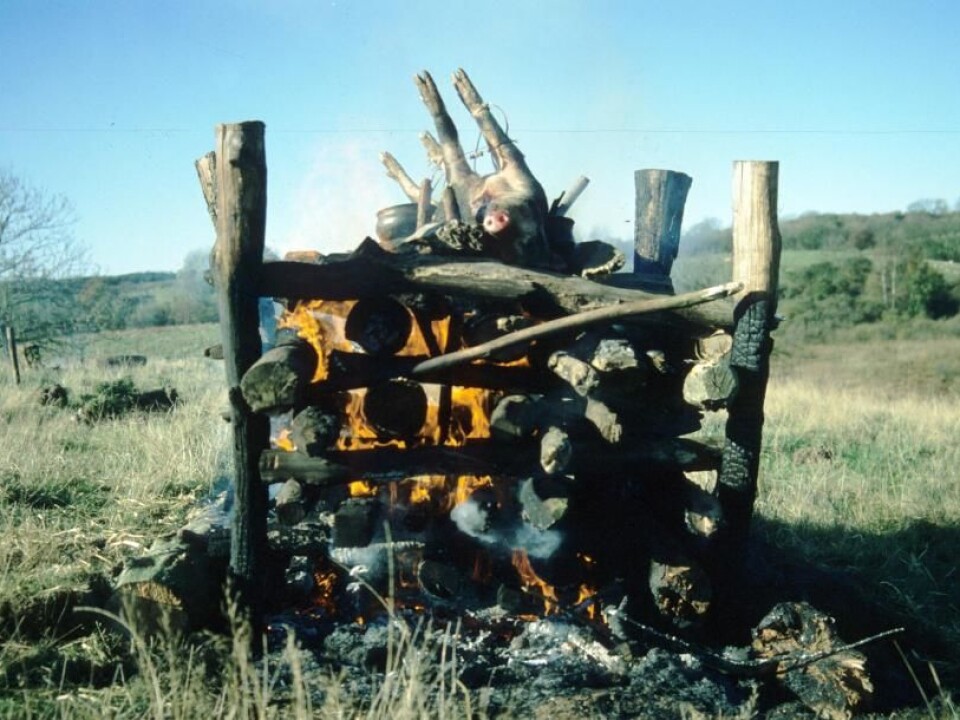
Read More: Archeologists burn pigs to investigate historical mystery
Flint: ancient firecrackers
Cremation would have activated all the senses.
“The pyre was sometimes raised on thick poles so the spectators could get a better view. Then flint stone was collected and thrown into the fire. Flint contains pore water which can crackle loudly [when burned],” says Henriksen.
“It’s difficult to excavate sound from the earth, but I call them the ancient firecrackers, and that’s clearly how they were used. I cannot imagine anything else,” says Henriksen.
His research also shows that special plants and woods were added to the fire to create smoke and smells.
The choice of an open fire is probably not a coincidence, says the archaeologist.
“Why not use an oven-like construction? It would save fire and was resistant to weather and wind. But they did it this way because people wanted to follow the transformation involved with the fire. It was an important part of the process of saying farewell to the dead. We can’t imagine it today, where the cremation process is hidden away,” he says.
Read More: Secrets in the cemetery
Graves were for the living and the dead
For people today, it may seem strange to burn the deceased in such spectacular fashion, but Henriksen rejects the idea that ancient people were primitive.
“They thought things through. The pyres did not happen randomly or at random places. It was a carefully selected location, and that applies whether we are in the Bronze Age, Iron Age, or the Viking Age. It wasn’t about choosing the place where it was easiest to get firewood, but where the deceased should be buried,” he says.
The rituals were extensive and did not simply end with after the pyre had burnt down.
“There was more than burning going on here. There was preparation of food, bone material was deposited in the ground, and animals and weapons sacrificed as offerings. The graves are sealed and reopened. It wasn’t just a place where you burnt and buried people. The place represents the transition from the living to the dead. There’s a highly developed mind-set behind these processes,” says Henriksen.
Read More: Unique Viking tomb contains remains of noble couple
Ancient graves were dynamic
Henriksen has been excavating graves and the remains of pyres for the past three decades, which led to his research in cremation.
He excavated so many of these types of archaeological sites that he became more and more interested in all the things that he could not quite explain.
“I’ve looked at bones, urns, gifts. But I began to think about the ritual itself. More and more, I think that this was central,” says the archaeologist.
What we call a tomb today is a static thing or concept that represents a one-time treatment where the body is present in its entirety. But in ancient times, a tomb was a dynamic thing, says Henriksen.
“It could be opened, things could be placed there or taken out, and closed again. A body could be split up,” he says. “We know that significant events took place after the cremation. The cremated remains are divided into portions, some are placed [in the tomb] while others are missing.”
Read More: New Viking graves discovered in Denmark
A systematic and thorough study
It is a beautiful piece of work, says Marianne Rasmussen Lindegaard, archaeologist and project leader at the Danish Agency for Culture and Places.
“Mogens Bo Henriksen covers everything in a systematic and a thorough review of a topic for which we have a lot of fragmentary evidence, but actually know very little about,” says Lindegaard.
She praises Henriksen’s use of experimental archaeology.
“He uses experiments to get an overall [picture] of the limited evidence that we have. It doesn’t give us hard evidence, but it gives us a really good platform to interpret and develop theories from. Henriksen has created a reference work that we can use for many years to come,” says Lindegaard.
Henriksen still hopes that more archaeological material will show up and cast more light over the rituals of cremations.
“As an archaeologist you’re always hoping for a Pompeii situation, or a place that was sealed quickly, perhaps by drifting sands,” he says. “There are places in North Jutland and North Zealand that may prove to be quite untouched. I’d like to get in there and dig.”
--------------
Read more in the Danish version on Videnskab.dk
Translated by: Catherine Jex
